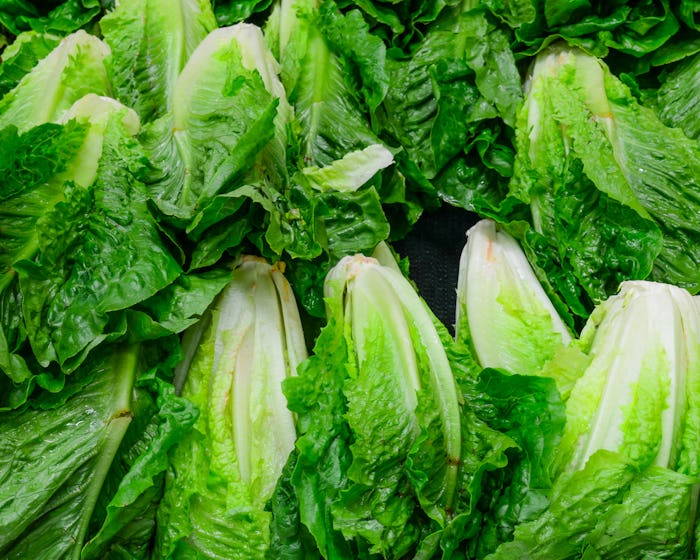News
There's A Pretty Logical Explanation For Why There Are So Many Food Recalls
Unfortunately for consumers, 2018 was full of food contamination breakouts across the United States. E. Coli ruined romaine lettuce for a hot minute, while some pre-made salads were recalled due to listeria concerns. Although this has been a tricky time for parents, rest assured there's a logical explanation for all of these food recalls.
If you're concerned about the recent rash of food recalls (beef, cauliflower, romaine lettuce, canned corn, sausage, pre-made salads, etc), it's reasonable to be worried. Food contamination, whether it be due to E.coli or Salmonella, is a subject that should be taken seriously considering food-borne illnesses can be life-threatening, especially for young children, according to the Food and Drug Administration (FDA).
So, why have there been so many food recalls lately? A troubling statistic regarding recall investigations seems to validate these concerns. The Center for Disease Control and Prevention (CDC) has investigated "22 outbreaks in 2018 so far, which is the highest number of investigations in 12 years," according to Delish.
In short, the FDA is getting better at detecting contaminated food. "I think that the issue isn't that there's more unsafe food," FDA Commissioner Scott Gottlieb explained to CNN. "I think what's happening is that we have better technology than ever before to link outbreaks of human illness to a common pathogen."
Gottlieb elaborated on Twitter:
New technology such as genomic interrogation of human and food samples are enabling us to better identify outbreaks. The tools for doing more effective track and trace to isolate contaminated products and implement more targeted recalls need to catch up.
To put it in simpler terms (I was lost at genomic interrogation), agencies now have the ability to link illnesses in people to specific food sources. The CDC developed a national health network called PulseNet so that "labs around the country can collaborate with one another to analyze food-borne diseases and crack down on bad products more quickly," according to TheStreet.
The only problem? The FDA and CDC have yet to develop a system that can quickly link a contaminated food source to its distributor. This is an important part of the process because it can take weeks before the appropriate agencies track down the affected farm or factory.
Gottlieb took to Twitter on Nov. 23 to assure consumers that the FDA is working to improve its practices:
We’re working with growers and distributors on labeling produce for location and harvest date and possibly other ways of informing consumers that the product is ‘post-purge.' One goal we’re seeking is to make this type of labeling the new standard rather than a short-term fix; as a way to improve identification [sic] and traceability in the system.
Another issue to look at? The increased demand for pre-made foods and pre-washed produces. These types of items visit a lot of places before hitting store shelves, which means there are more chances for contamination along the way.
Matthew Jon Stasiewicz, an assistant professor of applied food safety at the University of Illinois at Urbana-Champaign, explained to the Chicago Tribune:
Fifty years ago you would have gotten lettuce from a farmer in your state, now it’s coming from California and Arizona on a much larger scale. It’s not just coming from farther away, it’s coming from fewer and larger distributors. When you get food on a larger scale it’s not inherently any riskier, but if there’s a problem the potential harm is magnified.
Of course, the topic of food safety is a loaded one. There's no simple explanation to address the recent rash of recalls, but there are some plausible ideas. The most comforting one is that the FDA and CDC are working together to better detect contaminated food, which would explain the rise in recall cases.
After a very frustrating first birth experience, this Deaf mother wanted a change. Will the help of two Deaf doulas give the quality communication and birth experience this mom wants and deserves? Watch Episode Four of Romper's Doula Diaries, Season Two, below, and visit Bustle Digital Group's YouTube page for more episodes.
